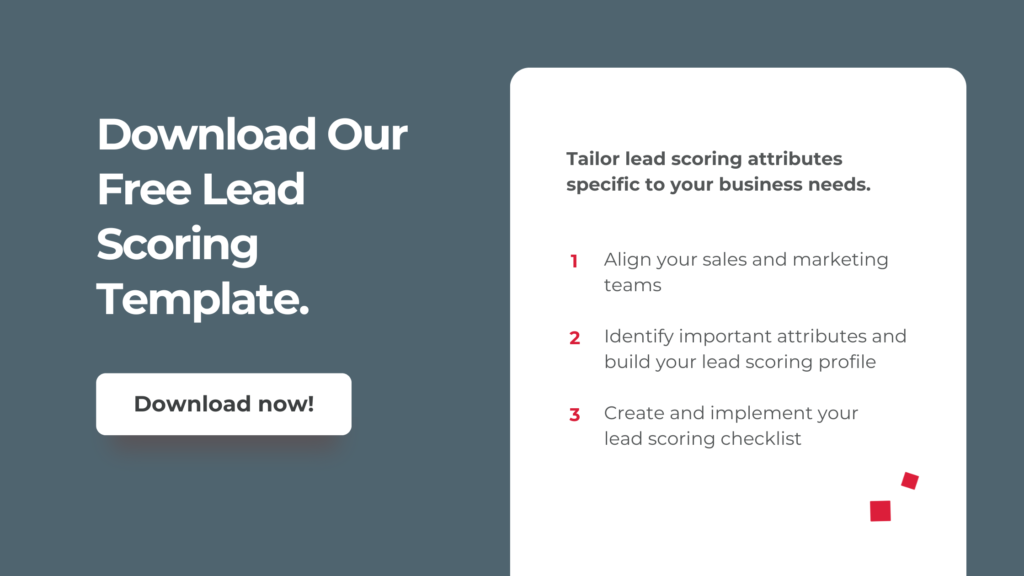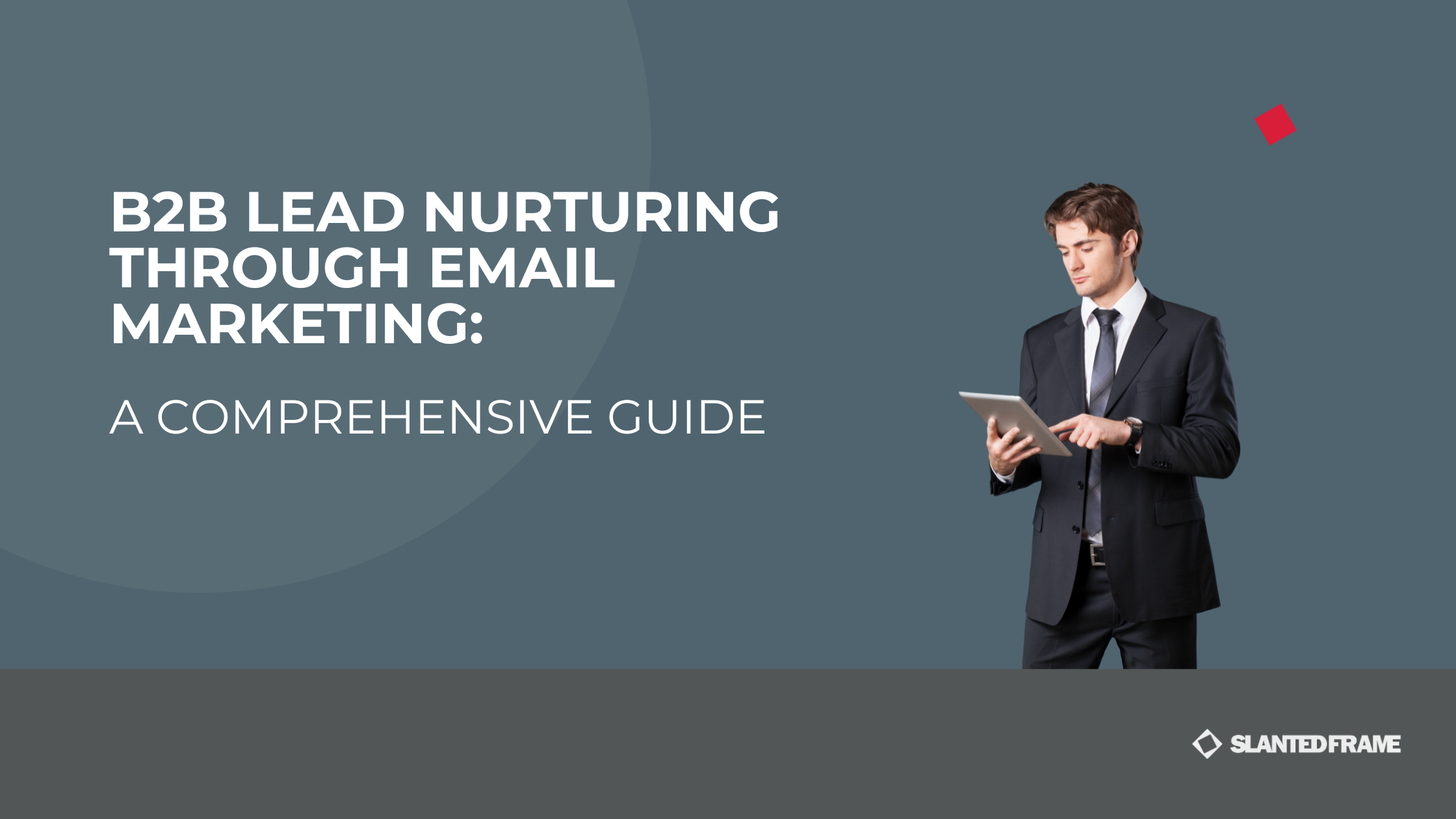Today, email marketing remains a cornerstone of effective B2B lead generation. For tech and SaaS companies, particularly those catering to small and midmarket businesses, mastering email marketing strategies is crucial for nurturing leads and driving growth.
This guide aims to provide you with a detailed, expert-driven approach to B2B email marketing, helping you understand the processes, strategies, and best practices to optimize your campaigns.
Why Email Marketing is Crucial for B2B Lead Generation
Email marketing is essential for B2B lead generation because it facilitates direct communication with potential clients, builds trust, and nurtures relationships over time. With 87% of B2B marketers using email as a distribution channel, it’s clear to see its underlying importance in the marketing mix.
Key advantages:
- Direct Communication: Reach decision-makers directly, offering a more personal and urgent communication channel compared to social media, leading to higher engagement rates.
- Building Trust and Credibility: Regular emails sharing valuable content like whitepapers and case studies help establish your startup as a thought leader, with 77% of B2B buyers preferring email communication.
- Nurturing Relationships: Segment your audience and tailor messages to different buyer journey stages, addressing specific pain points and increasing conversion likelihood. Personalized emails can improve click-through rates by 14% and conversion rates by 10%.
- Cost-Effectiveness: Email marketing offers a high ROI, making it a cost-effective channel for reaching and converting leads.
- Automation and Scalability: Use automation features to scale campaigns effortlessly. Automated sequences ensure timely, relevant follow-ups based on lead interactions, which is crucial for rapid growth.
- Data-Driven Insights: Metrics such as open rates, click-through rates, and conversion rates provide insights into audience preferences, helping refine segmentation and personalization efforts.
- Maintaining Engagement: Regular email communications keep potential clients engaged and aware of your offerings, shortening sales cycles and boosting retention rates.
- Driving Conversions: Email marketing guides potential clients through the conversion funnel, whether it’s for demo sign-ups, trial activations, or direct purchases.
By using email marketing, SaaS and tech startups can effectively generate and nurture leads, build lasting relationships, and drive sustainable growth. Investing in a robust email marketing strategy is essential for any startup looking to establish a strong foothold.
Generate B2B Leads through Email Marketing
Generating B2B leads via email marketing involves creating compelling lead magnets, such as whitepapers, case studies, and webinars. Ensure your signup forms are prominently displayed on your website and social media channels.
Effective B2B email marketing includes:
- Gated Content: Offer valuable content in exchange for contact information. Create high-quality resources like eBooks, industry reports, and video tutorials that address your audience’s challenges. For example, a SaaS company might offer a guide on “Optimizing Cloud Infrastructure for Scalability.”
- Clear CTAs: Use strong calls-to-action to guide prospects towards taking the next step. Ensure your CTAs are clear, compelling, and aligned with the content of your email. Phrases like “Download Now,” “Get Your Free Trial,” or “Schedule a Demo” can drive action.
- Follow-ups: Send follow-up emails to re-engage leads who have shown interest but haven’t converted yet. These can include reminders about upcoming webinars, additional resources related to their initial download, or personalized messages from a sales representative.
Tips to Optimize Your Signup Forms:
- Simplify the Form: Only ask for essential information to minimize friction. Typically, a name and email address are sufficient for the first point of contact. You can gather more detailed information later in the nurturing process.
- Clear and Compelling Headlines: Use a headline that clearly communicates the value of signing up.
- Engaging Design: Make sure your form is visually appealing and easy to read. Use contrasting colours for the submit button and ensure the text is large enough to be read easily.
- Social Proof: Add testimonials or the number of people who have already signed up to build trust.
- Mobile Optimization: Ensure your signup forms are mobile-friendly, as many users will access them from their smartphones. A form that is difficult to fill out on a mobile device can significantly reduce conversion rates.
- Incentives: Offer an immediate incentive for signing up, such as access to a valuable piece of content, a discount, or entry into a giveaway.
- Trust Signals: Include trust badges or privacy statements to reassure users that their information will be handled securely and won’t be misused.
- A/B Testing: Regularly test different form elements, such as headlines, button text, and field numbers, to see which combinations yield the highest conversion rates.
By optimizing your signup forms with these tips, you can significantly improve your conversion rates and effectively capture more leads.
How to Nurture Leads through Email Marketing
Nurturing leads through email marketing involves segmenting your audience, personalizing content, and delivering value at each stage of the buyer’s journey.
Image source: Hubspot
Start by identifying key segments within your audience based on industry, job role, and engagement level. Personalized emails have been shown to generate 6x higher transaction rates, emphasizing the importance of targeted communication.
To create an effective email nurture sequence, consider the following steps:
- Segmentation: Divide your email list into smaller segments based on demographics, behaviour, and engagement. For instance, a SaaS company might segment based on industry (e.g., healthcare, finance, education) or role (e.g., CTO, marketing manager).
- Personalization: Tailor your messages to address the specific pain points and interests of each segment. Use dynamic content to personalize the subject lines, body text, and CTAs.
- Automated Workflows: Use marketing automation tools to send timely, relevant emails based on user actions. Set up automated sequences that trigger when a lead downloads a whitepaper, signs up for a webinar, or visits a specific page on your website. These workflows ensure that your leads receive the right content at the right time, moving them closer to a purchase decision.
Four Strategies for Effective B2B Email Marketing
1. Personalized Content
Tailor emails to address the specific pain points and interests of your recipients. Personalization can significantly increase engagement and conversion rates. Use data from past interactions, CRM insights, and behavior analytics to craft personalized messages.
2. Leveraging Social Proof
Include testimonials, reviews, and case studies to build credibility and trust with your audience. Highlight success stories from similar companies or industries. For example, a tech startup could showcase a case study of how their software helped a midmarket company reduce costs by 30%.
3. Educational Content
Share valuable insights and industry knowledge to position your brand as a thought leader. This approach helps in building long-term relationships with potential clients. Topics could include industry trends, how-to guides, and expert opinions relevant to your audience.
4. Powerful CTAs
Use clear and compelling calls-to-action to guide your audience towards the next step. Make sure your CTAs are relevant to the content and the stage of the buyer’s journey. For instance, after sharing an industry report, your CTA could invite the reader to a webinar that delves deeper into the findings.
Craft an Email Nurture Sequence
Creating an email nurture sequence involves setting up a series of automated emails that guide prospects through the sales funnel. Begin with a welcome email, followed by emails that provide educational content, case studies, and eventually, product demos or free trials.
A typical B2B nurture campaign might include:
- Welcome Email: Introduce your brand and set expectations. Thank new subscribers for joining and provide an overview of what they can expect in future emails.
- Educational Emails: Provide valuable content that addresses common pain points. Share insights, how-to guides, and industry trends that help your audience solve their challenges.
- Case Studies/Testimonials: Showcase success stories to build trust. Highlight how your product or service has helped other companies achieve their goals.
- Product Information: Offer detailed insights into your product or service. Explain features, benefits, and use cases that are relevant to the recipient’s needs.
- Demo/Trial Offer: Encourage leads to try your product with a free trial or demo. Provide clear instructions on how to get started and what to expect during the trial period.
Optimal Email Frequency and Timing
Source: Hubspot
The ideal number of emails in a B2B nurture campaign typically ranges from 3 to 5, spaced out over several weeks. The timing of these emails can significantly impact engagement rates. Research shows that the best times to send B2B emails are Tuesday, Wednesday, and Thursday mornings between 8 AM and 1 PM.
To optimize email frequency and timing:
- Frequency: Avoid overwhelming your leads; 3-5 well-timed emails are usually sufficient. Too many emails can lead to unsubscribes, while overwhelming your leads can result in lost interest.
- Timing: Send emails during business hours when your audience is most likely to engage. Research shows that B2B emails sent between 8 AM and 10 AM have the highest open rates, while those sent around 1 PM tend to have better engagement rates
Key Metrics to Track in B2B Email Marketing
Tracking the right metrics is crucial for optimizing your email campaigns and ensuring they deliver the desired results.
Focus on the following key performance indicators (KPIs):
- Open Rates: This metric indicates how many recipients open your emails, helping you measure the effectiveness of your subject lines and the timing of your sends.
- Click-through Rates (CTR): CTR measures the percentage of recipients who click on links within your email. This helps you understand how engaging your email content is and whether your call-to-action (CTA) is compelling enough.
- Conversion Rates: This metric tracks the percentage of email recipients who complete a desired action, such as filling out a form or making a purchase, after clicking through from your email. Conversion rates are critical for assessing the overall success of your email campaigns in driving desired actions.
Additionally, lead scoring can help you prioritize leads based on their engagement levels. By assigning scores to various actions (such as opening an email, clicking a link, or downloading a resource), you can identify which leads are most likely to convert and focus your efforts accordingly.

These metrics provide valuable insights that can guide your strategy, allowing you to refine your approach and achieve better results with each campaign.
Conclusion
In conclusion, a well-structured email marketing strategy is vital for nurturing leads and driving revenue growth in the B2B sector. By personalizing content, leveraging social proof, and tracking key metrics, you can enhance your email marketing efforts and achieve significant results.
By implementing these strategies and continuously refining your approach, you’ll be well-equipped to nurture leads effectively and drive business growth through email marketing.
Need more insights or help refining your strategy? Get in touch.

